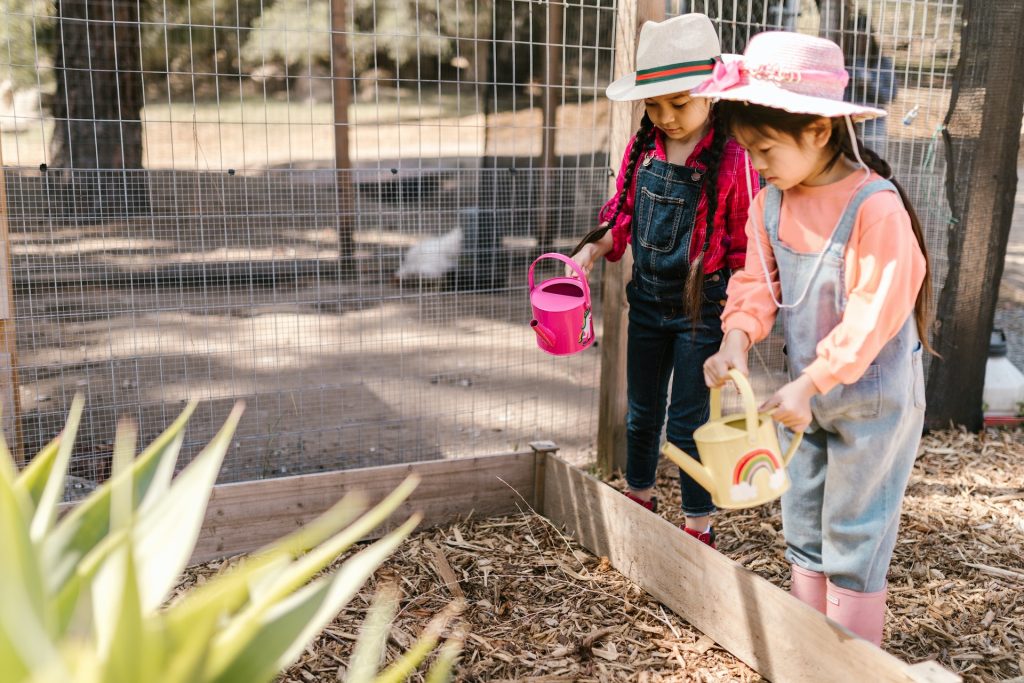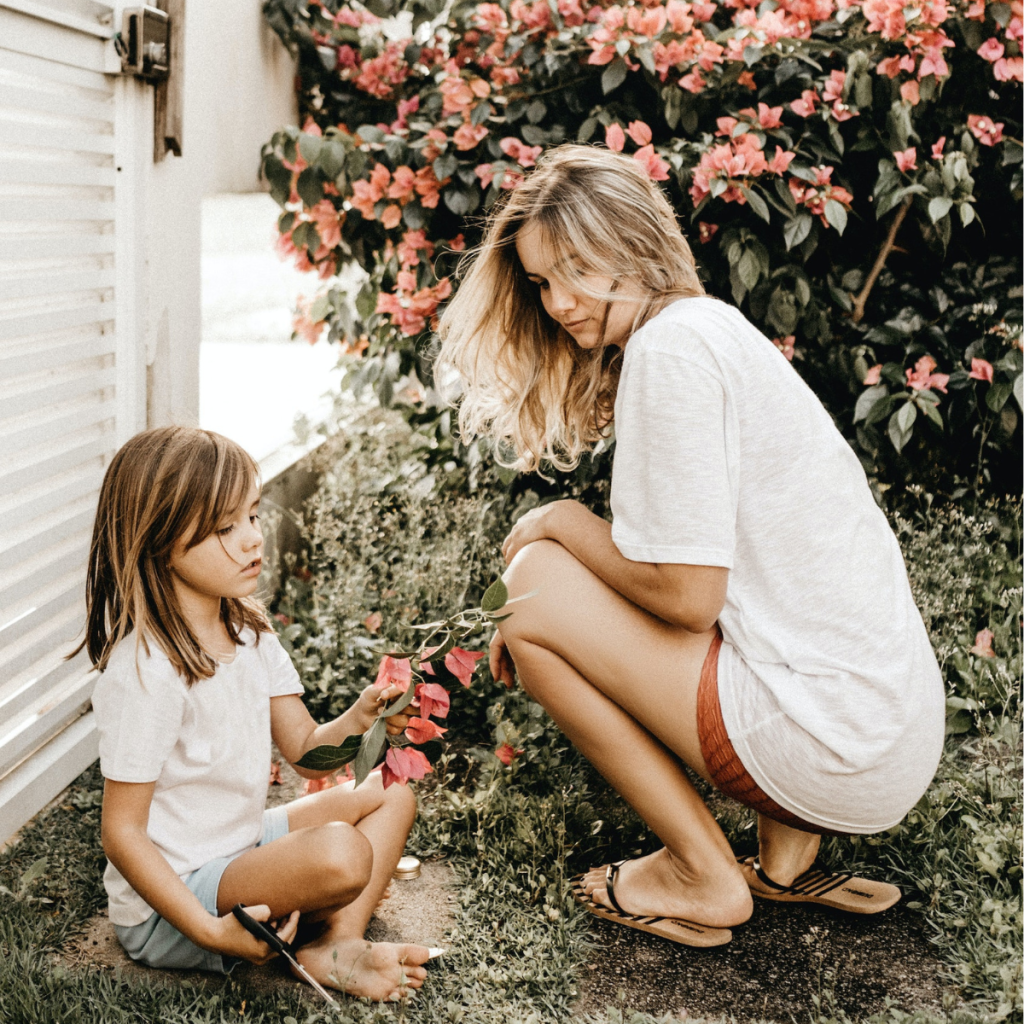Discover effective strategies and tips on how to introduce gardening to your 3-4 year old child.
How to Teach Gardening to a 3-4 Year Old Child
Are you ready to embark on a wonderful adventure with your little one? Teaching gardening to a 3-4 year old child is not only a great way to spend quality time together, but it also provides numerous benefits for their development. So, put on your gardening gloves and let’s dig in!
Understanding the Importance of Gardening for Toddlers

Before we delve into the nitty-gritty of teaching gardening to your little sprout, let’s take a moment to understand why it’s so important. Gardening not only helps kids develop a love for nature but also fosters a sense of responsibility and patience. It teaches them about the environment, the wonders of plant life, and the beauty of the natural world. Plus, it’s a fantastic way to spark their curiosity and ignite their creativity!
Gardening provides a hands-on experience that allows toddlers to connect with the earth and explore the world around them. As they dig in the soil, plant seeds, and watch their garden grow, they develop a deep appreciation for the natural processes of life. They learn about the importance of sunlight, water, and nutrients for plant growth, and witness firsthand the magic of transformation as tiny seeds sprout into vibrant flowers or delicious vegetables.
Furthermore, gardening offers a sensory-rich environment for toddlers to explore. They can feel the texture of the soil, smell the fragrant flowers, and listen to the buzzing of bees and chirping of birds. These sensory experiences stimulate their cognitive development and enhance their understanding of the world.
Benefits of Gardening for Young Children
Gardening offers a plethora of benefits for our young green thumbs. It promotes physical activity, improves fine motor skills, and enhances hand-eye coordination. As toddlers engage in activities like digging, planting, and watering, they develop their muscles and improve their coordination and balance.
Moreover, gardening teaches young children valuable life lessons about nurturing, growth, and responsibility. They learn that plants need care and attention to thrive, just like they do. Through the process of tending to their garden, toddlers develop a sense of empathy and responsibility as they understand the impact of their actions on living things.
As they plant seeds and help their little garden thrive, toddlers also develop a sense of pride and accomplishment that boosts their self-confidence. They learn that with patience and perseverance, they can make beautiful things grow. This sense of achievement fosters a positive mindset and encourages them to take on new challenges with enthusiasm.
Age-Appropriate Gardening Tasks
Now that we understand the benefits of gardening for toddlers, it’s time to get our hands dirty! When assigning gardening tasks to your little one, keep their age and capabilities in mind. For 3-4 year olds, simple tasks like watering plants, picking flowers, and raking leaves are perfect. These activities allow them to actively participate in the gardening process while keeping it enjoyable and manageable for their young age.
For older toddlers, around 5-6 years old, they can take on more responsibilities such as planting seeds, weeding, and even helping with basic garden maintenance. This age group can also benefit from learning about different types of plants and their specific needs, further expanding their knowledge and understanding of the natural world.
Remember, it’s all about making gardening fun and enjoyable for toddlers. Encourage their curiosity, let them explore, and celebrate their accomplishments. By nurturing their love for gardening at a young age, you’re setting the foundation for a lifelong appreciation of nature and all its wonders.
Preparing Your Garden for a Toddler
Before your little gardener sets foot in the garden, let’s make sure everything is toddler-friendly and safe.
Gardening is not only a great way to spend time outdoors but also an excellent opportunity to teach your toddler about nature and the environment. By involving them in gardening activities, you can foster their love for plants, insects, and the beauty of the natural world. However, it’s crucial to ensure that your garden is a safe and child-friendly space for them to explore.
Choosing the Right Tools for Toddlers
Toddlers love having their very own tools, so invest in age-appropriate gardening equipment. Look for child-sized shovels, rakes, and watering cans that they can comfortably hold and use. Not only will this make them feel like true gardeners, but it will also prevent any mishaps or accidents.
Additionally, consider getting them a pair of child-sized gardening gloves to protect their hands from dirt and potential scratches. These gloves will make them feel like professional gardeners and encourage them to actively participate in gardening tasks.
Creating a Safe Gardening Environment
Safety first! It’s essential to create a safe gardening environment for your little one to explore. Make sure there are no hazardous plants or thorny bushes within their reach. Take the time to identify and remove any toxic plants that may pose a risk to your child’s health.
Furthermore, consider installing a small fence or barrier around the garden area to prevent your toddler from wandering off or accessing areas that may be unsafe. This will give you peace of mind and allow your child to freely explore their gardening space without any worries.
When it comes to selecting plants for your toddler’s garden, opt for varieties that are non-toxic and child-friendly. Flowers like marigolds and sunflowers are not only visually appealing but also safe for little hands to touch and explore. Additionally, consider growing some edible plants, such as cherry tomatoes or strawberries, which will not only engage your toddler but also provide them with a sense of accomplishment when they can harvest and taste their own produce.
Set clear boundaries and explain to your toddler which areas are off-limits. Teach them about the importance of respecting plants and the creatures that call the garden home. Encourage them to observe insects and birds, explaining their role in pollination and the ecosystem. By fostering a sense of respect and appreciation for nature, you are instilling valuable lessons that will stay with them throughout their lives.
Remember, a safe garden is a happy garden! By taking the necessary precautions and creating a child-friendly environment, you can ensure that your toddler’s gardening experience is not only enjoyable but also educational and safe.
Simple Gardening Concepts for 3-4 Year Olds

Now that our garden is ready, it’s time to introduce our little learners to some gardening basics!
Gardening is not only a fun and enjoyable activity, but it also teaches children valuable lessons about nature, responsibility, and patience. By involving them in the process, we can instill a love for plants and the environment from an early age.
Introducing Basic Plant Life Cycle
Start by teaching your child about the magical journey of plants. Explain the concept of seeds, how they germinate, and gradually turn into beautiful flowers or delicious vegetables. Use simple language and show them pictures of different stages in the plant life cycle. You’ll be amazed by how quickly they grasp the concept!
For example, you can show them a picture of a tiny seed and explain that it contains all the necessary nutrients and instructions for the plant to grow. Then, talk about how the seed needs water, sunlight, and soil to germinate and sprout. Encourage them to imagine the seed as a little sleeping baby, waiting to wake up and grow.
As the plant grows, explain how it develops leaves, stems, and roots. Discuss the importance of leaves in capturing sunlight for photosynthesis and how roots help the plant absorb water and nutrients from the soil. You can even let them touch and feel the different parts of a plant to make the learning experience more interactive.
Teaching About Different Types of Plants
Let’s expand our little one’s green vocabulary by introducing them to various types of plants. Take them on a botanical adventure as you explore different flowers, herbs, and vegetables. Teach them about the different colors, shapes, and smells, and encourage them to be curious and observant. Who knows, you might have a budding botanist on your hands!
Start by showing them pictures or actual samples of different plants. Talk about the characteristics that make each plant unique. For example, you can discuss how roses have thorns for protection, or how sunflowers turn their heads to follow the sun. Make it a game by asking them to identify the plants they see when you go for a walk or visit a park.
Additionally, you can introduce them to the concept of edible plants. Show them pictures of fruits and vegetables and explain how they grow from plants. Encourage them to try different types of fruits and vegetables and explain the importance of eating a variety of colors for a healthy diet.
By teaching children about different types of plants, we can spark their curiosity and appreciation for the natural world. They will learn to recognize and appreciate the beauty and diversity of plants around them.
Fun Gardening Activities for Toddlers
No garden adventure is complete without some fun-filled activities!
Planting Seeds Together
Planting seeds is a hands-on experience that will fill your little gardener with excitement. Let them pick out their favorite seeds and show them how to gently bury them in the soil. This will kickstart their connection with nature and teach them about patience as they wait for the seeds to sprout.
Watering and Watching Plants Grow
One of the most thrilling moments for your little one will be seeing their plants grow. Show them how to water the plants and explain the importance of sunlight and nutrients for their growth. Encourage them to observe and document the changes in their plants, creating a beautiful memory journal of their first gardening journey!
Overcoming Challenges in Teaching Gardening
Teaching gardening to a toddler may have its challenges, but don’t fret! With a playful approach, we can overcome any obstacles that come our way.
Dealing with a Toddler’s Short Attention Span
We all know that toddlers have those moments when their attention wanders. To keep them engaged, break the gardening tasks into smaller, manageable chunks. Take breaks for snack time or have fun with a mini treasure hunt. Turning gardening into a game will keep their focus sharp and their enthusiasm high!
Managing Mess and Dirt
Gardening can get messy, but that’s part of the fun, right? Embrace the dirt and teach your child the importance of cleanliness afterward. Provide them with a small basin of water for handwashing breaks and remind them that getting dirty is part of the joyful gardening experience. Plus, it’s a great opportunity for them to learn about hygiene!
Congratulations, you’re now equipped with all the tools and knowledge you need to teach gardening to your 3-4 year old child. So, put on those gardening hats, grab your little one’s hand, and get ready for a magical journey of growth and discovery. Happy gardening!



